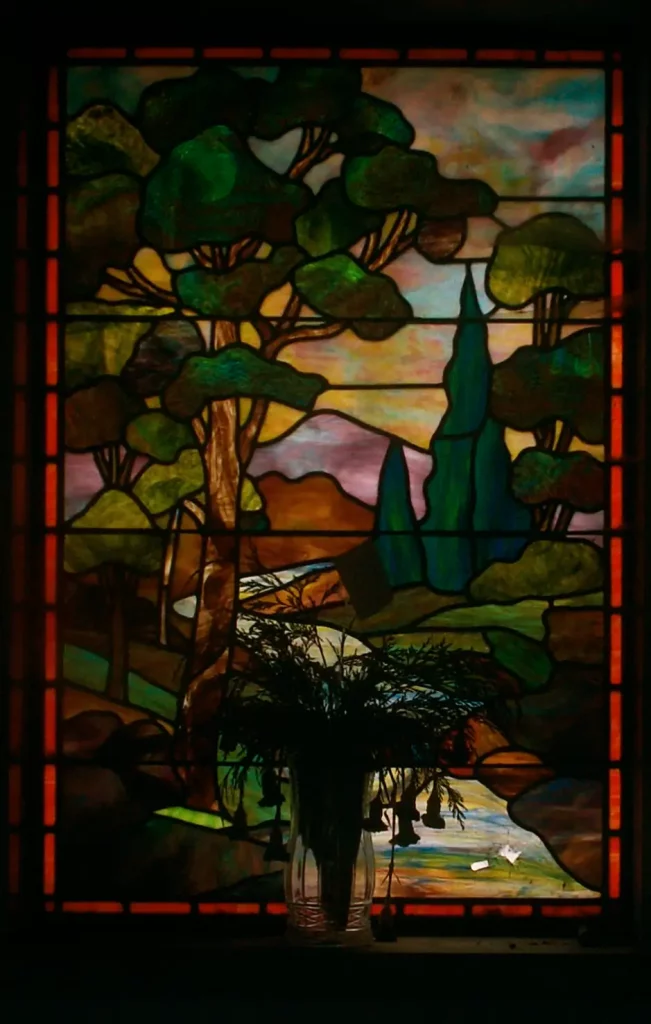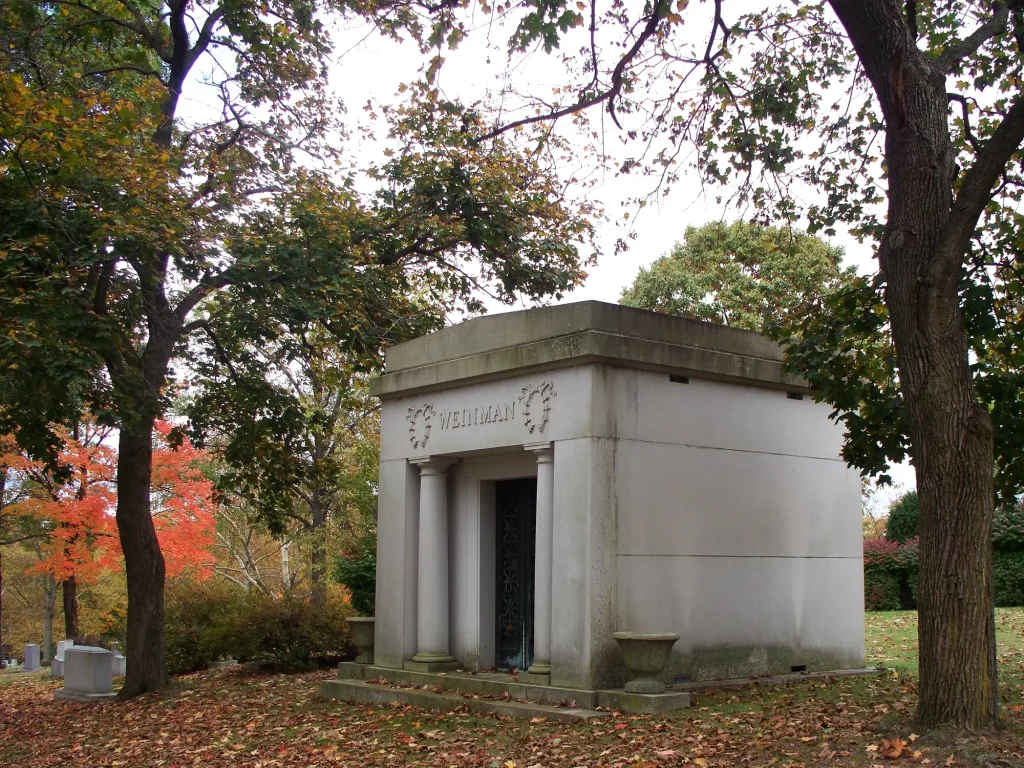A standard classical mausoleum of the 1920s or so (the earliest burial was in 1930). Father Pitt’s favorite detail is the giant acorns where we usually find urns for flowers.
-
Thorp Mausoleum, Homewood Cemetery
-
Rowe-Huston Mausoleum, Homewood Cemetery
-
Reilly Mausoleum, Calvary Cemetery
-
Morris Mausoleum, Homewood Cemetery
A vigorous sculpture with a swirling upward motion appropriately illustrates the quotation from 1 Thessalonians 4:14. The quotation itself, however, is ungrammatically mangled in the inscription. The full verse is this: “For if we believe that Jesus died and rose again, even so them also which sleep in Jesus will God bring with him.” The stonecutter, doubtless believing he had detected the King James translators in a solecism, inscribed, “They which sleep in Jesus, will God bring with him.” But the translators were right and the stonecutter was wrong; he has made nonsense of the verse.
George W. Morris, the first occupant of this mausoleum, died in 1899; it may have been put up for him some years before that.
Father Pitt assumes that the base of the sculpture is supposed to represent a cloudy whirlwind, but it could also be a pile of dirty laundry.










